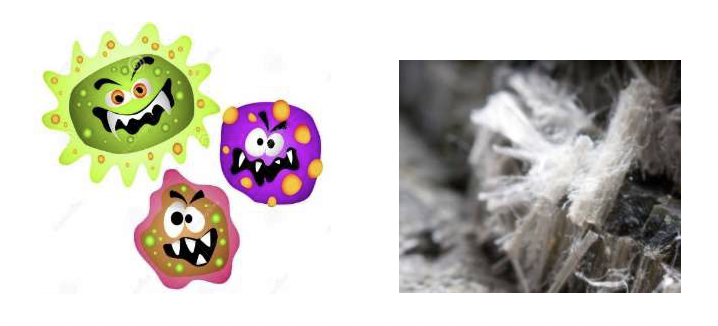Top 10 Questions to Ask the Indoor Environmental Professional Before You Hire Them

Top 10 Questions to Ask the Indoor Environmental Professional Before You Hire Them


Meet Ed
Instructor Ed Jones has over 30 years of experience in theindustry, has the title of MasterWater Restorer, is an Institute ofInspection Cleaning andRestoration Certification (IICRC)-approved instructor, and hasserved on the S500-2021consensus body committee todevelop the most recent standard.
Indoor Environmental Professionals (IEPs) are who you hire to test for mold or asbestos typically on water losses. Too many times we hire them without a specific plan or agreed upon sampling strategy and when the results come back and they found visible mold, elevated mold spore counts indoors, or some materials tested positive for asbestos, we struggle to identify if the mold came from this water loss, are any materials still wet, could there be unrelated water issues in the structure, and is any mold related to incomplete drying by restorer? Did asbestos fibers get aerosolized and spread to unaffected areas and who caused the cross-contamination? How about the HVAC system? Visible mold found or just elevated mold spore counts compared to outdoor samples and any contamination from the dreaded “cross-contamination” of mold spores or asbestos fibers?? Any evidence of cross-contamination?
It is critical we have a “huddle” with the IEP to discuss what information we need and agree upon a specific sampling strategy PRIOR to the IEP’s inspection!

Not too hard to find mold since mold is ubiqutous on this planet and many older buildings still have asbestos containing materials (ACM) in some common building materials, e.g., insulation, floor & ceiling tiles, and joint compound.
See Top 10 Questions I recommend you ask before hiring an IEP and sending them to find mold or asbestos:
1. Education/Certifications – Certified Industrial Hygienist (CIH), Certified Indoor Environmentalist (CIE), etc. Do they have the IICRC AMRT mold remediation certification or are they AHERA certified? Any state licenses required? State Regulations for mold or asbestos?
2. Sampling Strategy - air samples AND tape lift/surface samples? I recommend air samples taken 4-6 feet off the ground with air pump set for 15 LPM for 5 minutes indoors in occupied areas and 10 minutes outdoors if it is a windless day, otherwise 5 minutes outdoors is fine. Need 2 outdoor samples (1 from the windward side of home and 1 from the leeward side of home). Need indoor air sample from each affected room and 1 from an unaffected room to set a baseline. In addition, we need tape lift samples of anything that looks like visible mold to identify if it is mold or not and what species of mold.
3. Photos - need good photos of all affected rooms and any potential visible microbial growth, how much and where located (level of home/room/wall/floor/ceiling, etc.). Also, photos of any potentially unrelated damage that could have been caused by water (water stains, dark staining on wood materials, deterioration of materials, etc.). Finally, we need photos of all readings.
4. Conditions of the home - description with photos showing the conditions of the home
(clean, messy, dirty, filthy, etc.). Any signs of pets in the home or unrelated damage?
5. Sketch – sketch with dimensions of all affected areas, showing areas to be remediated or abated, if needed, and where potential visible microbial growth or wet materials were found. Ask for sketch to correspond to photos with room labels, walls 1, 2, 3, 4, etc., with doorways shown in the sketch and to note any unrelated damage on the sketch, as well as where samples were taken (air & surface).
6. Readings - both psychrometric with a thermo-hygrometer and moisture content with a penetrating moisture meter, if possible. Need psychrometric conditions outside, inside affected, unaffected, and HVAC system on day of inspection. Need moisture content readings of any potentially affected materials in affected areas or where there might be unrelated moisture issues. *Ask for photos of the readings labelled where reading was taken **Ask for readings to be labelled, e.g., Living Room/Wall 1/Sill Plate/22% or Dining Room/Wall 2/Drywall/20% ***Critical we know what type/brand/model meters they used
7. Evidence of Negligence – if mold or wet areas found, does the inspector think it’s related to areas the mitigation contractor dried, and could it represent signs of incomplete drying or could there be unrelated moisture issues in the home?Any signs of dust, debris, sloppy workmanship, etc.?
8. Laboratory Used to evaluate samples –recommend we obtain all breakdowns of species of mold, spores per cubic meter by affected and unaffected rooms compared to outdoor samples. Turn around time for test results to be provided?
9. Clearance Criteria – what criteria do they use to identify if there is a mold issue and what criteria do they use to judge successful mold remediation? *No national standard on how much mold is healthy or unhealthy
10. Cost for testing - initial test for mold or asbestos, including writing a protocol for mold remediation and cost for post-remediation verification test? *Always ask for a verbal summary of their report to discuss results
Finally, I recommend asking for their opinion, if visible mold was found, if they think it was pre-existing or related to a recent water loss?



